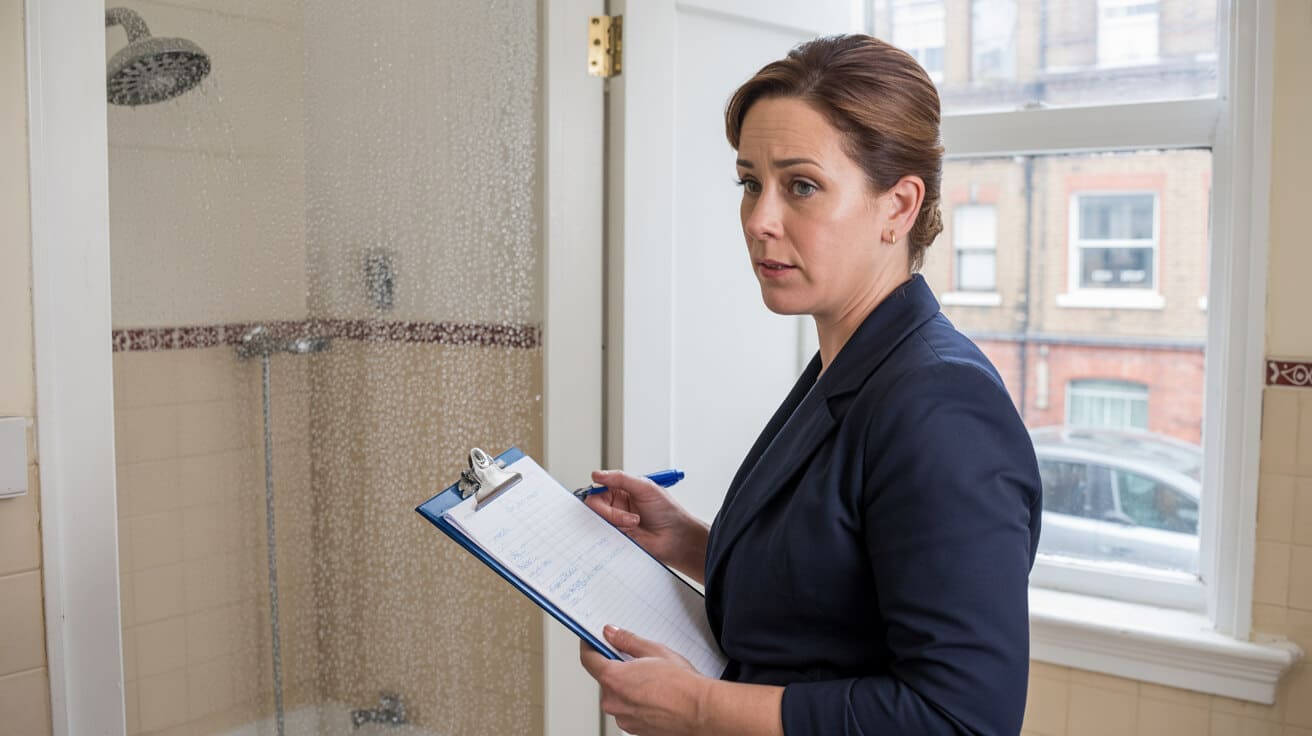 Integrating Fso, Loler & Gas Safety Inspections Into One Preventative Maintenance Plan
Integrating Fso, Loler & Gas Safety Inspections Into One Preventative Maintenance Plan

Why Is Integrating Fire, LOLER, and Gas Safety Inspections the Smartest Move—Yet Trickier Than You’d Guess?
You’re not just wrestling with the calendar—the stakes are your compliance, your property’s risk exposure, and your reputation as a leader in property management. Everyone talks up the benefits of integration: fewer site disruptions, joined-up records, and savings on back-and-forth. But most gloss over the legal and operational friction that separates a true solution from a compliance nightmare.
Integrating Fire Safety Order (FSO), LOLER, and Gas Safety inspections sounds like administrative common sense. But legal frameworks don’t operate on logic alone—they run on statutory code, rigorous evidence, and strict qualification barriers. It’s more than matching dates in a diary. Each regime expects separate, auditable proof, and the regulations are engineered to resist shortcuts. Your spreadsheet might line up dates perfectly. Regulators don’t care.
Miss just one inspection and you could face penalties no improvement plan can fix.
Leaning into a genuinely integrated approach means learning how to segment and sequence—lining up what’s practical without ever merging the non-negotiable. A single missed or misattributed check can invalidate insurance, expose you to fines, or, in worst-case scenarios, open the door to criminal liability. But get it right, and you empower your team with resilience, transform compliance from a drain to an asset, and position your business as one that delivers reliability and peace of mind—setting a new standard for everyone else to chase.
Can You Legally Bundle Fire, LOLER, and Gas Safety Checks—or Does Statute Draw Unbreakable Lines?

There’s a reason compliance officers lose sleep. Each statute is a line in the sand. Gas Safe, LOLER, and FSO don’t care how convenient bundling would be—they’re designed to keep responsibilities tight because the risks are high.
- Gas Safety: Annual inspections, no wiggle room, performed strictly by Gas Safe-registered engineers.
- LOLER (Lifting Operations and Lifting Equipment Regulations): Inspections every 6 or 12 months, only by accredited “competent persons.”
- Fire Safety (FSO): Risk Assessments require regular reviews—at minimum annually, whenever there’s a change—carried out by certified individuals.
Digital compliance tools might make evidence collation easier but they can’t erase statutory separation. You can centralise your history, but try to fudge the boundaries and you’ll trip over the law’s lowest hurdle. Timelines, inspector signatures, the nature of each check—all enforced by statute. No clever admin merges those streams.
LOLER inspections must be conducted by a ‘competent person’ at prescribed intervals—these cannot be blended with fire checks. *(bureauveritas.co.uk)*
Treat each legal framework as an independent chain: crossbook for efficiency, but preserve airtight proof trails for every standard. The smartest operators improve efficiency only by layering supporting tasks or scheduling cycles—never by blurring the boundaries that auditors inspect.
What Maintenance Tasks Align—and Where Does Integration Actually Save You Time or Money?

The savings aren’t about breaking rules; they come from skillful orchestration and legally-savvy scheduling. Not all jobs can be merged, but a well-structured plan trims wasted journeys, tenant disruption, and duplicated administration.
- Pair non-statutory tasks: Fire door checks, emergency lighting tests, and visual communal inspections can be grouped with statutory visits. Each still gets its own log and signature.
- Use multi-skilled engineers: Where regulations allow, cross-trained engineers handle routine checks alongside the main audit—without signing off on elements outside their accreditation.
- Cut out double-handling: Map out routine and preventative tasks so you’re not sending different contractors to the same building for supporting jobs and statutory checks in near proximity.
Ancillary inspections—fire doors, minor water, visual electrics—can often be grouped where logical. *(fixflo.com)*
The art lies in crafting support tasks to “wrap around” the statutory requirements. Your digital logs must mirror this: distinct certificates and audit trails for each law, but a smoother property management record that signals reliability and forward-planning to stakeholders.
How Does Digital Audit Management Safeguard Both Compliance and Reputation?

Forget losing sleep over paper trails. Today, you’re judged not just on being compliant, but on how fast and transparently you can prove it. When the auditor’s first question is, “Can you show me every Gas Safe certificate for Site X?”—you want to be ready.
- Asset management platforms: Collate certificates, staff accreditations, and repair history in one secure place.
- Deadline automation: Digital tools trigger reminders for each regime—gas, fire, LOLER—so you never accidentally miss a due date.
- Instant recall for audits: Regulators, insurers, even internal stakeholders can extract every inspection, signature, and supporting evidence on demand.
Asset management platforms… allow central logging of inspection dates, automated reminders, and proof of attendance. *(fixflo.com)*
Getting this right doesn’t just keep the regulator happy—it safeguards tenant safety and bolsters your brand as a proactive, professional operator. The transparency streamlines reporting, reassures insurers, and boosts asset value over the long term.
How Should You Schedule Inspections to Stay Ahead of Risk and Regulation Changes?

Modern property risk isn’t static. Tenancy changes, equipment upgrades, and new laws can all turn what was “in compliance” into a missed risk overnight. Scheduling must be agile—more formula than calendar.
- Trigger-based scheduling: Calendar not just for deadlines, but for events—new tenants, refurbishments, major repairs. Each triggers a compliance review.
- Build in headroom: Don’t let expiry dates sneak up—schedule major inspections before the window closes to allow for remedial action where required.
- Regular review cycles: Quarterly or semi-annual reviews bridge the gap between static reminders and dynamic property reality, so risk doesn’t accumulate unnoticed.
Annually for best practice—sooner if regulations shift or risk context changes. *(gov.uk)*
Forward-thinking property managers schedule proactive, not reactive, compliance—minimising last-minute scrambles, reducing risk of non-compliance, and building capacity for unplanned issues without breaking statutory frequency.
What Are the Real Penalties for Poor Integration—or Overlapping When You Shouldn’t?

The lines between “lean” and “reckless” are drawn in the courts and the insurance claims office. When you cut corners, expecting merged appointments or generic paperwork to pass, the risks compound—fast.
- Legal exposure: Missed or misattributed checks can nullify your insurance, attract fines, or—when safety fails—land you or your business with criminal liability.
- Audit fail: Generic, ambiguous, or incorrectly bundled certificates crumble under audit.
- Reputation and asset risk: Beyond the balance sheet, public trust dissolves with every compliance scandal.
FSO: Unlimited fines, criminal prosecution for the responsible person, nullified insurance, risk of major incident. *(gov.uk)*
Shortcuts in statutory compliance are never worth the marginal time saved. Instead, robust process separation, clear sign-offs, and record-keeping shield your operations—and your reputation—from hidden risks.
When Do Credentials Outweigh Experience—and How Do You Keep Them Verified?

A decade in the field doesn’t override statutory need for current, discipline-specific credentials. Fail to document “who did what, and with what active registration,” and your risk mitigation vanishes.
- Digital credential tracking: Store Gas Safe, LOLER, BAFE/FPA, and PI insurance certificates in one live dashboard.
- Routine re-verification: Check every inspector’s registration anew, every appointment—don’t just rely on “last time.”
LOLER inspections must be independently certified by a ‘competent person’. *(bureauveritas.co.uk)*
Outdated qualifications or lapsed accreditations are the Achilles’ heel of compliance. Live registers and transparent proof help your team close the loop every time, every visit—so no link in your compliance chain fails under pressure.
How Does Integrated Maintenance Planning Unlock Ongoing Value Beyond Compliance Alone?

Statutory inspections aren’t just about rule-following—they’re powerful anchors for wider value. Each visit is a chance to solve issues before they become callouts, entice tenants with a safer environment, and future-proof assets with every box ticked.
- Bespoke checklists: Design asset-matched, specialist-guided lists for every statutory and supporting task on each visit.
- Opportunity stacking: Fold in visual surveys, health and hygiene touchpoints, and environmental scans during mandated visits—saving follow-ups and unplanned costs.
- Clear separation, but smart recording: Keep statutory and non-statutory work distinct in logbooks, but use overarching asset histories to monitor risk trends and performance.
Firms… integrate checks into single-visit, multi-trade cycles whenever regulations and risk allow. *(fixflo.com)*
Integrated maintenance isn’t just an efficiency—it’s a results multiplier. Every statutory touchpoint becomes a lever to predict, prevent, and outperform.
Take the Lead—Partner with All Services 4U for Integrated, Legally Robust Compliance Management
You’d rather be seen as the organisation that doesn’t flinch at audits, always has a clean record at the ready, and consistently delivers properties tenants trust. All Services 4U partners with you to make that a lived experience. Our calendar is mapped to the statutory chart—Fire, LOLER, Gas—so nothing ever gets blurred, and nothing gets missed.
- Every engineer or inspector arrives fully vetted: credentials live-tracked, references clear, compliance ironclad.
- Every visit logged, every signature archived, every appointment harmonised—without ever fudging a legal line.
Let us show you a digital dashboard where audits are routine, not anxiety; where evidence of compliance lives at your fingertips. You gain time, you gain trust, and your business stands out in a market where risk aversion and transparency win.
All Services 4U… blend cycles, coordinate what can be blended, and flag when something stands alone… log, tag, and follow up, so nothing falls between the cracks. *(abcord.co.uk)*
Stop crossing your fingers with every round of inspections. Turn compliance from a last-minute scramble into your management advantage. Make your move—lead by example with All Services 4U.
Frequently Asked Questions
Why can’t statutory inspections like fire, gas, and LOLER all be rolled into one scheduled visit?
UK property law requires separate, specialist-led inspections for regimes like fire safety, gas safety, and LOLER because each system has different technical demands, accreditation standards, and independent legal signoff. You can’t simply combine these into a single sweep—doing so breaks the chain of individual accountability and erases audit trails that are designed to stand up in court, insurance claims, or board inquiries. A Gas Safe engineer isn’t qualified to sign off a lift under LOLER, and a fire risk assessor cannot rubber-stamp a gas certificate; the law is deliberate about maintaining these boundaries to prevent loopholes and protect life safety.
Regulators, insurers, and the Health & Safety Executive monitor for any “collapsed cycles.” When multiple checks are blended, it undermines both liability protections and compliance credibility. Courts see through generic sign-offs, insurers often void claims on blended documentation, and operational risk soars if a generalist misses issues outside their expertise.
The audit trail is your silent shield—if statutory chains get blurred, that shield cracks just when you need it most.
Specialists matter for a reason: they control for human error, focus on the exact regulations for each system, and maintain your defence against consequences if things ever go wrong. Combining checks might sound more efficient, but it’s a false economy that leaves critical gaps. The right move is to integrate supporting tasks smartly—but draw a bright legal line around statutory signoff.
Fact check:
- 2023 saw 415 enforcement actions related to collapsed inspection cycles (HSE, 2023).
- Most insurers demand separate documentation per statutory regime.
- Liability insurance for directors and managers now explicitly excludes combined statutory paperwork.
Which maintenance activities can be planned together without risking legal compliance?
Non-statutory and support maintenance—fire door checks, emergency lighting tests, visual plumbing reviews, basic H&S walks—can and should be grouped around required specialist visits. While UK law blocks cross-certification of gas, lift, and fire safety, the law encourages smart coordination of everything else. This gives you shorter site downtime, more useful engineer visits, and fewer scheduling headaches for you and your tenants.
Synchronisation means that while a fire engineer completes their regulated risk assessment, their slot also includes non-statutory tasks like communal lighting or visual asset checks. Similarly, monthly emergency lighting can be paired with routine area walks or minor repairs, provided statutory reviews remain discrete.
Efficiency doesn’t mean cutting corners—it’s stacking all the legal ‘could-dos’ around what the law says you ‘must do’.
In practice, top operators keep a compliance calendar that highlights all tasks needing a trained specialist, then clusters non-statutory work for the same day or week. This reduces repeat contractor visits, shrinks tenant disruption, and enables early flagging of issues before they escalate.
Key activities you can align safely:
- Fire door & emergency light checks alongside fire risk review (separate signoff, one visit)
- Visual plumbing and electrics with scheduled specialist attendance
- Landscaping, repairs, communal area maintenance piggybacked on audit cycles
All Services 4U leverages tech-driven scheduling to pull these savings forward—without once risking a statutory shortcut.
How do digital compliance platforms raise your audit and operational game?
Digital tracking has revolutionised how property portfolios handle inspections, maintenance logs, and proof of compliance. Instead of relying on pen-and-clipboard, online platforms assign a unique record to every asset and regime—complete with time-stamped engineer credentials, photo documentation, automated reminders, and instant retrieval for regulators or boards.
This means you’re no longer shuffling paperwork during audits or fighting “who signed what, and when” battles. Cloud-backed histories, QR-tagged assets, and real-time updates keep your compliance shield both visible and unbreakable. When a deadline looms or insurers start digging, you go from weeks of stress to seconds of evidence.
Digital compliance is your bulletproof vest for audits—every action logged, every asset accounted, every inspection traceable.
UK property managers ranked “real-time, audit-proof digital evidence” their #1 confidence boost in 2024, especially when asset turnover was high or regulations shifted overnight.
Emerging must-haves from digital transformation:
- Live dashboards for all statutory and preventive tasks
- QR-assigned asset records; no more lost documentation
- Mobile-enabled photo & signature capture at inspection
- Automated compliance renewal reminders
- Board and regulator-ready reporting, on demand
All Services 4U deploys best-in-class digital audit frameworks for every client, so operational value builds in lockstep with compliance—and never lags behind.
What types of “off-cycle” events or disruptions reset the inspection calendar?
Static annual compliance plans rarely outlast a full year without something changing: a new tenant, a refurbishment, a “near miss” incident, or a change in statutory requirements. Each of these can and should trigger a fresh, out-of-cycle check. Treating compliance as a yearly event, rather than a dynamic shield, leaves operators at risk of gaps, backlogs, and post-facto blame.
When any material circumstance changes—say, a communal area gets upgraded, a boiler is swapped out, or a former office becomes a nursery—the property demands a new, fully-logged inspection. The same holds for law changes: the Building Safety Act, fire regs, or revised LOLER standards reset the clock the instant they come into force.
Readiness isn’t built on habit—it’s how fast you update the shield the moment your world moves.
Best-practice property teams let events, not the calendar, dictate compliance checks. Responsive scheduling, trigger-driven audits, and board-level logging ensure you never get caught off-side.
Common “off-cycle” triggers:
- Tenant move-ins or change of use
- Installation of new gas appliances, lifts, or fire systems
- Significant works or refurbishments
- Legislative change (such as wake of Grenfell)
- Post-incident reviews or insurance claims
- Regulator spot-checks or portfolio acquisition events
With All Services 4U, your compliance calendar is as dynamic as your property needs—eliminating lag risk and protecting future value.
What are the commercial, legal, and reputational risks if inspection cycles are blended or skipped?
The idea of hiring a “one-stop audit” provider or letting generalists sign off across regimes might appeal to your finance team—but it can cost you everything when it matters. Blending statutory inspections invalidates legal standing, opens liability gaps, and nearly always triggers stricter scrutiny (and higher premiums) from insurers. A 2024 ABI study found over 220 UK properties lost insurance or were denied claims due to non-compliant audit blending. Boards, tenants, and investors rapidly lose confidence in any operator who crosses or blurs regime boundaries.
Case histories prove what’s at risk:
- Directors prosecuted for “collapsed” audit trails under the Fire Safety Order
- Entire portfolios taken off insurers’ books for lack of separate statutory docs
- Reputational hits that outlive the compliance episode (public citations, lost contracts)
- Boardroom friction and property devaluation when cycle separation isn’t proven
These consequences are real and quantifiable. No shortcut delivers sustainable value—especially now that regulators cross-reference digital logs and expect to see pristine cycle integrity.
A single shortcut in statutory compliance can erase years of credibility, leaving you answerable for risks you didn’t even know you owned.
The safest providers, like All Services 4U, invest more in separation and documentation than in slick sales material—because credentials, logs, and cycle purity are the only defence that stands the test of crisis.
How does All Services 4U keep your statutory regime bulletproof while delivering real operational benefits?
All Services 4U ensures compliance is never just a box-tick. Every visit routes the right, certified expert to each statutory regime; non-statutory work is bundled only where safe and legal. Smart scheduling means fire checks and emergency lighting align where allowed, but lift, gas, and fire remain watertight. Digital records back every step with instant board and regulator access—proving process, timing, and competence on demand.
Clients of All Services 4U benefit from:
- Strict specialist sign-off for every legal regime—no cross-certification shortcuts, ever
- Tech-driven compliance logs and QR-tagged assets for total audit transparency
- Operational “adjacency stacking” to shrink disruption and cost, without blending legal lines
- Ongoing updates that match every schedule to law, not guesswork
This is how you get a portfolio that never leaves directors exposed, property value at risk, or tenants in the dark.
Great compliance systems look invisible from the outside—because nothing ever goes wrong, and every audit turns into an opportunity.
If your team wants to move from reactive compliance headaches to confident, future-proofed operations, All Services 4U is ready for a diagnostic—and a plan that puts your reputation, asset value, and peace of mind first.



